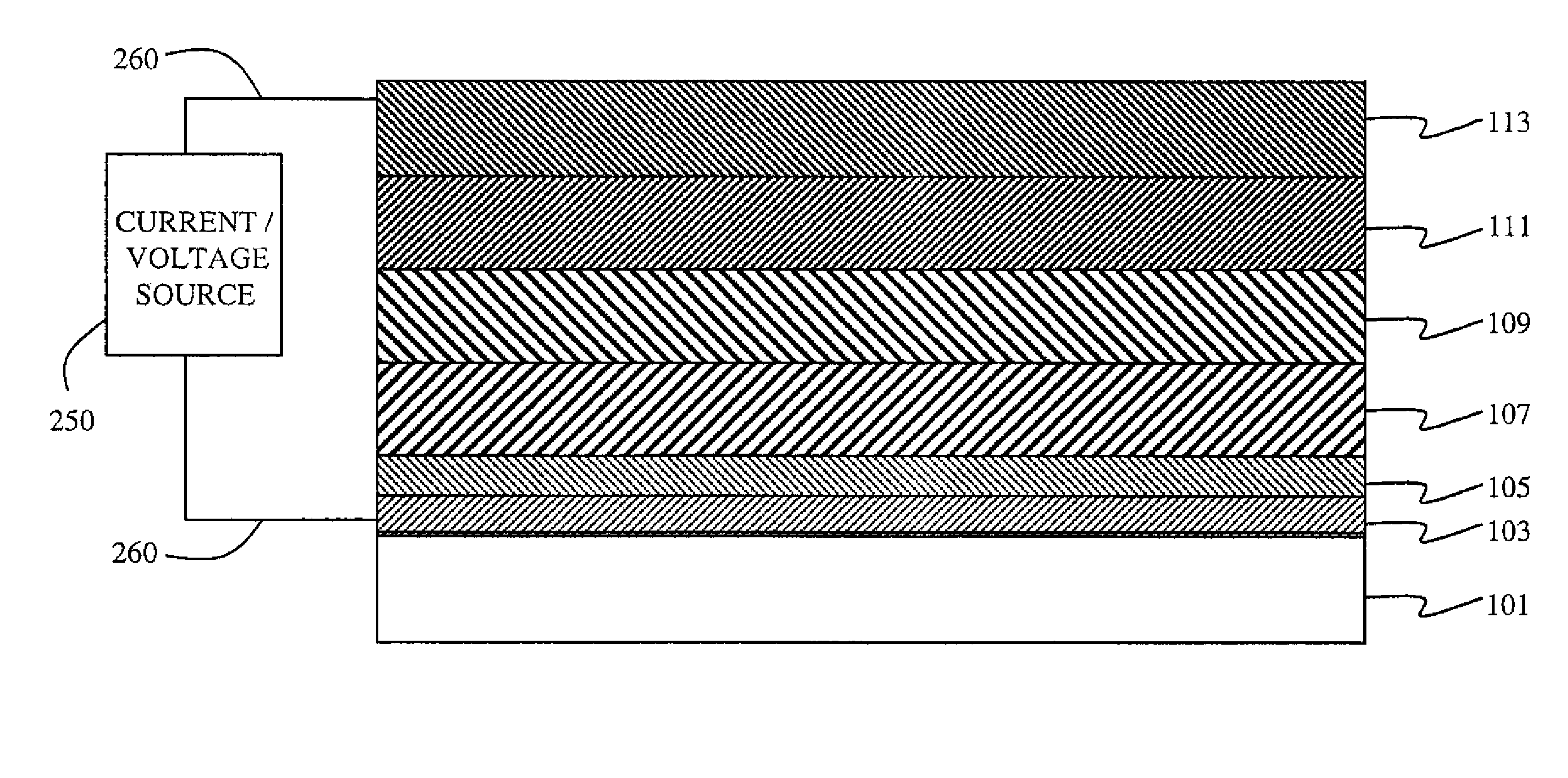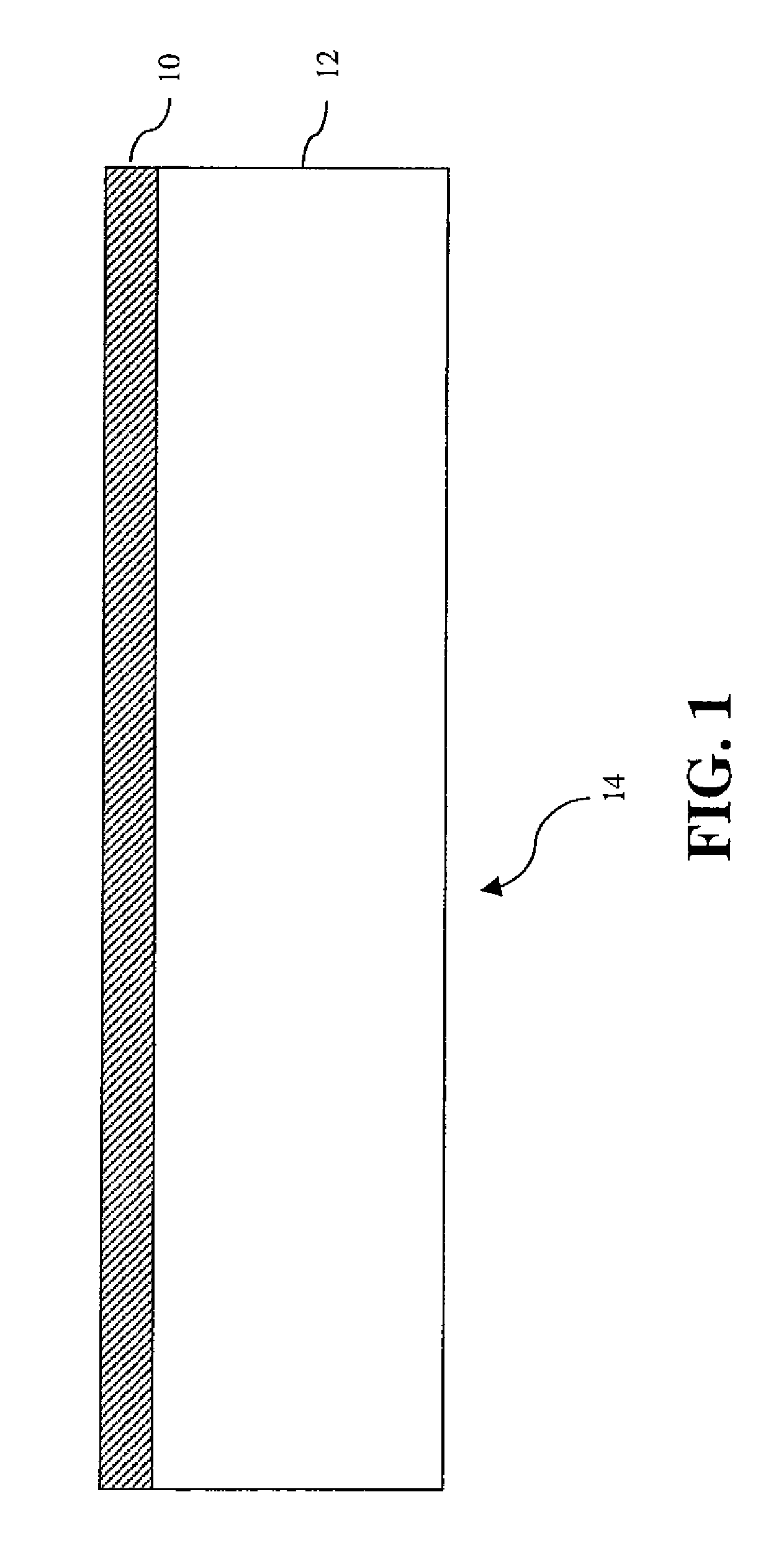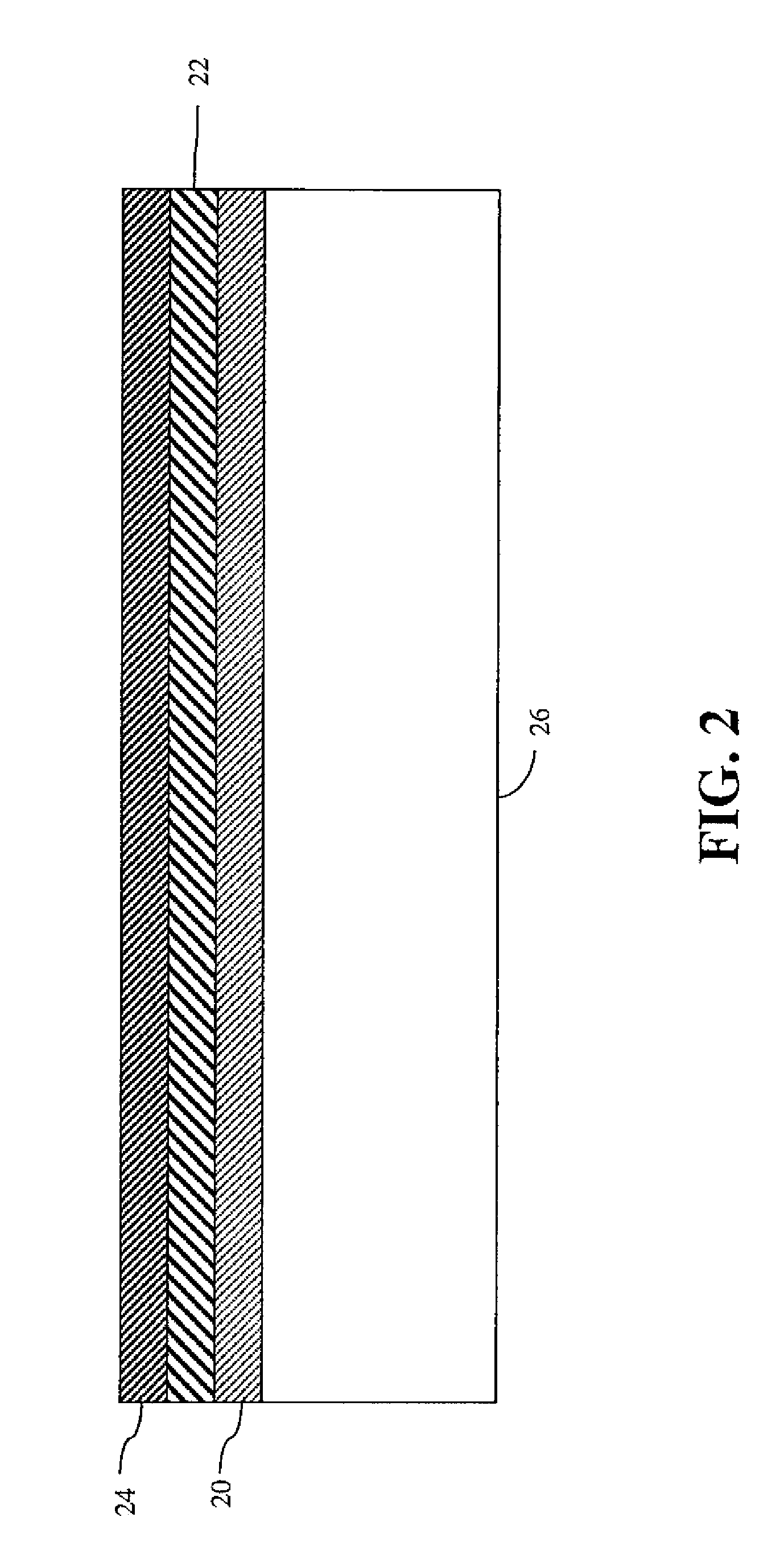Polymeric conductor donor and transfer method
a technology of polymer conductors and donor electrodes, which is applied in the direction of non-metal conductors, conductors, transportation and packaging, etc., can solve the problems of limiting the range of potential applications, high cost of fabrication methods, and low flexibility of such electrodes
- Summary
- Abstract
- Description
- Claims
- Application Information
AI Technical Summary
Benefits of technology
Problems solved by technology
Method used
Image
Examples
examples
Donor Laminates
[0153]The following ingredients were used to form the coating composition for forming the donor laminate examples:
Ingredients for Coating Composition
[0154](a) Baytron P HC: aqueous dispersion of electronically conductive polythiophene and polyanion, namely, poly(3,4-ethylene dioxythiophene styrene sulfonate), supplied by H. C. Starck;
(b) Olin 10G: nonionic surfactant supplied by Olin Chemicals;
(c) N-methylpyrrolidone: conductivity enhancing agent supplied by Acros;
(d) diethylene glycol: conductivity enhancing agent supplied by Aldrich;
(e) Silquest A 187: 3-glycidoxy-propyltrimethyoxysilane supplied by Crompton Corporation and
(f) isopropanol;
The following coating composition A was prepared for coating suitable substrates to form the laminate examples:
Coating composition ABaytron P HC (1.3% aqueous)88.71gOlin 10G (10% aqueous)0.5gN-methylpyrrolidone5.16gDiethylene glycol4gSilquest A 1871.8gIsopropanol4.33g
[0155]The laminate substrates used were triacetylcellulose (TAC) ...
PUM
| Property | Measurement | Unit |
|---|---|---|
| temperature | aaaaa | aaaaa |
| transparency | aaaaa | aaaaa |
| glass transition temperature | aaaaa | aaaaa |
Abstract
Description
Claims
Application Information
 Login to View More
Login to View More - R&D
- Intellectual Property
- Life Sciences
- Materials
- Tech Scout
- Unparalleled Data Quality
- Higher Quality Content
- 60% Fewer Hallucinations
Browse by: Latest US Patents, China's latest patents, Technical Efficacy Thesaurus, Application Domain, Technology Topic, Popular Technical Reports.
© 2025 PatSnap. All rights reserved.Legal|Privacy policy|Modern Slavery Act Transparency Statement|Sitemap|About US| Contact US: help@patsnap.com



